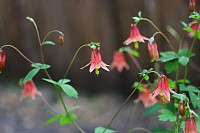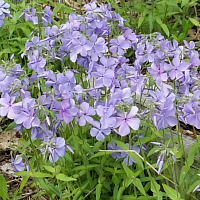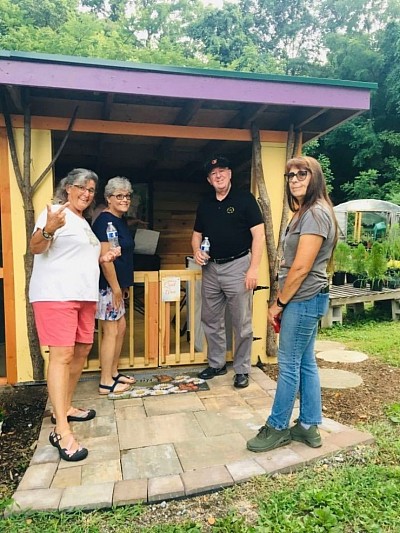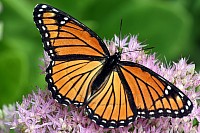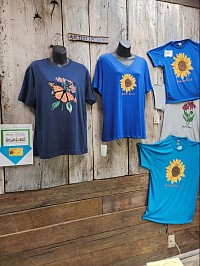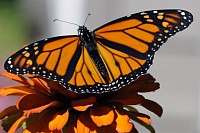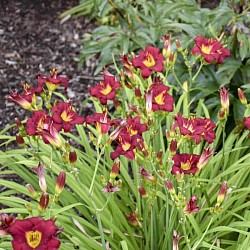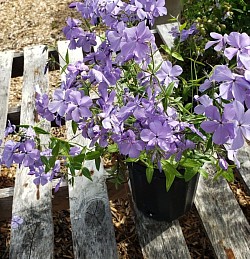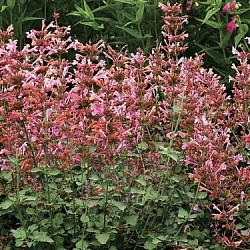NEW HOURS: Monday-Friday10-6 Sat-Sun: 12-5
APRIL PLANT OF THE MONTH
Native Columbine (Aquilegia canadensis) is a charming perennial wildflower that typically grows to a height of 1 to 2 feet.
This plant thrives in partial shade to full sun, making it versatile in various garden settings.
With delicate red and yellow bell-shaped flowers that bloom from mid spring to early summer, Native Columbine attracts a variety of pollinators such as bees and hummingbirds, providing essential nectar for them during the spring season.
Its distinctive foliage and unique flower shape make it a beautiful addition to any garden while also supporting local pollinator populations.
MARCH PLANT OF THE MONTH
Phlox divaricata (Woodland Phlox) is our first Perennial Plant of the Month for 2024
Phlox divaricata, commonly known as woodland phlox, is a charming perennial plant native to North America. With its fragrant, star-shaped flowers in shades of lavender, blue, or white, this low-growing beauty thrives in woodland settings, adding a touch of elegance to shaded gardens. Its spreading habit and lush green foliage make it an excellent ground cover, attracting butterflies and pollinators. Easy to cultivate and adaptable, Phlox divaricata is a delightful addition to gardens seeking a burst of color in shady corners.
2024 VIP Membership
VIP memberships are now available for 2024 and would make a great Christmas gift for your gardening friends.
VIP Membership includes a free Plant of the Month for the months of March through November.
New members also receive a free T-Shirt and 20% off any items in our Garden Shack. In addition, VIP members are allowed access to our pollinator conservation trail and field where they can hike or picnic.
Membership runs from March 2024 to December 2024. You must pick up your plants during the current growing season. We cannot hold plants over from one season to the next, nor can all plants be picked up before their respective months occur.
PURCHASE 2024 VIP MEMBERSHIP HERE
Plants of the Month for 2024:
March: Woodland Phlox (Phlox divaricata)
April: Native Columbine (Aquilegia canadensis)
May: Green & Gold (Chrysogonum)
June: Woodmint (Blephilia ciliata)
July: Pink Tickseed (Coreopsis rosea)
August: Rattlesnake Master (Eryngium yuccifolium)
September: Virginia Mountain Mint (Pycnathemum virginianum)
October: New York Ironweed (Vernonia noveboracensis)
November: Heartleafed Aster (A. cordolius)
Copyright 2024 Grasshopper Garden Escapes,Inc
Its Butterfly Season
🌼 Embrace the Magic of Monarchs!
Get ready for a mesmerizing experience with nature's delicate wonders? We're thrilled to announce that once again, our garden center is hosting an enchanting butterfly raising extravaganza! You will get to witness the captivating beauty of Monarch butterflies as they grace Grasshopper Perennials once again.
🦋 Raise Monarchs with Us! 🦋
Join us in our mission to protect these magnificent creatures by participating in our Monarch butterfly raising program. Discover the joy of nurturing Monarch caterpillars as they transform into breathtaking butterflies right before your eyes. Witness the incredible life cycle unfold from egg to caterpillar, chrysalis, and finally, the emergence of a fully-fledged Monarch butterfly.
If you wish to bring the magic of butterflies to your own backyard? Our garden center now offers Butterfly Habitat Kits. Each kit comes with all the essentials you need to raise healthy butterflies including a carrier, a habitat, and instructions. All you need to add is milkweed, (which we carry), and eggs or caterpillars which you can hunt for yourself or get from us if we have some to share.
🌸 Join the Butterfly Movement! 🌸
Promote biodiversity, educate your loved ones, and contribute to conservation efforts by joining our butterfly movement. Attracting butterflies to your garden helps support a diverse ecosystem, benefiting other pollinators and wildlife. Engage your family and friends with the mesmerizing transformation of caterpillars into butterflies, fostering a deeper connection to nature. Together, we can make a difference!
🌺 Visit Us Today and Let the Magic Begin! 🌺
Check Out Our New Butterfly Shirts
We've just introduced our much anticipated Monarch Butterfly Shirts.
June is Pollinator Month!
June being pollinator month is a great opportunity to raise awareness about the importance of pollinators and their role in maintaining a healthy ecosystem. Pollinators such as bees, butterflies, and hummingbirds play a crucial role in pollinating plants, which in turn provide food and habitat for other animals. However, pollinators are facing numerous threats such as habitat loss, pesticide use, and climate change. By dedicating a month to celebrating and protecting pollinators, we can educate people about their importance and encourage actions to support their conservation.
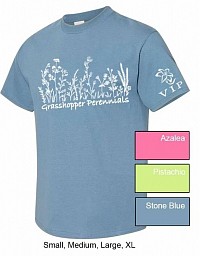
FREE T-Shirt with VIP Membership; can also be purchased without VIP sleeve graphic by anyone though for $15.00
VIP MEMBERSHIP IS NOW AVAILABLE
Join the VIP and be ready for some extra perks with us. You will receive a free Plant of the month for each month starting in March and continuing through November.
You will also receive the Grasshopper VIP T-shirt to let everyone know that you belong to our elite group!
Additionally, any VIP has anytime access to Annie (me) for all plant and horticultural related questions.
Check out the VIP page to see what plants will be waiting for you and to sign up. Cost is only $45.00 per year.
